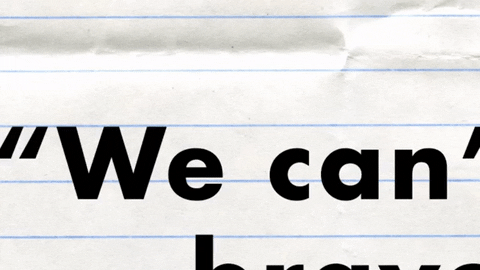Food might be the best part of our daily routine, but it can also be a tedious chore; we want to savor each bite, but worry how it impacts our health, the environment, and the people who produce it. So we obsessively count calories, check labels, and research health claims. And though we’ve come to expect technology to answer our every question (hey, Google!), the data on food and nutrition remain fragmented, hiding in tiny footnotes of brand websites and tedious government reports that—let’s face it—nobody wants to read.
Enter the Sage Project, an online platform aiming to be the food label to end all food labels.
[quote position="left" is_quote="true"]The way food data is presented to people has traditionally been stodgy and boring.[/quote]
Sage is run by a team of designers, dieticians, and creatives on a mission to solve a modern day food dilemma: access to information. Through surveys, focus groups, and prototype testing, the team studied two demographics of people: dieticians who teach people about food, and folks with dietary restrictions. The results helped them solve for the biggest problems in food, like what’s misunderstood by the general public, what helps people become active agents in their choices, and what makes food data feel (dare we say) fun?
The genius behind the platform is that it gamifies the way you engage with food, bringing design, data, and diet together on one user-friendly platform. And, like, an addictive video game, Sage lets you play with your food, turn it inside out, stretch it, and shrink it. Animated infographics and interactive modules bring context and clarity to nutrition, eliminating the knowledge gap between the food and the facts.
But it’s not all fun and games on the back-end. Sage is tackling something nobody wants to touch—what's been too much work for industry producers and too much red tape for policymakers.
“The way food data is presented to people has traditionally been stodgy and boring,” says Sam Slover, CEO and co-founder of Sage. “It’s never been presented in a way that turns on a lightbulb or makes sense for consumers. Our driving goal is to find out how to make food relatable and approachable, how someone can look at nutrition information and smile.”
[quote position="full" is_quote="true"]The tools we’re making are three to five years ahead of the food industry.[/quote]
The platform translates nutrition jargon into layman’s terms and manages to avoid contagious pseudoscience; after all, in an industry where ten companies own everything, labels also often mask what we really want to know. But unlike their static counterpart, a digital food database could be agile and adaptive to new laws and policy changes. Updating labels can take years; updating apps takes hours. But can a digital platform really change the food system? Slover thinks so.
“I truly believe that in the society we live in, one of the biggest ways we impact the world is through the things we choose to purchase, but it’s really hard to know the relative impact of those purchases. I think we can change that.”
[new_image position="standard large" id="null"]Santiago Gomez, Sage's Design Director, sketches out the app. Photo by Leah Kirts[/new_image]
So how does it work? You can search the database for food products you want, get nutritional facts like calories per serving, ingredients, allergens, and the caloric breakdown of carbs, fat, and protein. You can create a profile and set dietary restrictions only if you want to, and then watch how your preferences—like vegetarian or gluten-free—instantly categorize the food you want to eat more of and flag what you want to avoid. Sage reimagines serving size and nutrient-density as futuristic foodtech cartoons: a jump-roping chocolate bar, cycling watermelon, and jogging carton of french fries show how much energy it takes to burn-off calories; a blue gummy bear and pink strawberry each rotate on an axis surrounded by bubbles of nutrient data that expand when you hover over them.
The way Sage uses personalization to illuminate food data first evolved out of Slover’s graduate work at NYU’s Interactive Telecommunications Program.
“I thought about what would be the ideal food label of the future,” Slover recalls. “Like, how can you get more transparent information, personalize what people care about, and present it in a way that helps them make smarter decisions?”
For six months, Slover tracked everything he ate, researched where it came from, and monitored his nutrition levels. It wasn’t easy, but the results were eye-opening.
“What I found is that once the data is unlocked, you can give a lot of great information back to consumers, but nobody was doing it yet,” he says.
Cue the big millennial question, “Is there an app for that?” The answer is soon—the app is currently being built. Once released, you can use it to save and track products, then curate and share your preferences. Both the app and the online platform will have zero ads and be free for consumers to use and producers to upload their products. To ensure transparency, all data will be vetted by third-party verification and quarterly audits.
Within five years, Slover wants to have every food product in the database; as in, all major and independent grocery stores, food brands, restaurants, and producers. He wants Sage to be the game and tool everyone uses, from big brands to individual consumers. It would be the Google of the food system.
“There’s this push for more information, more transparent standards. The tools we’re making are three to five years ahead of the food industry, and what’s cool is that a lot of brands want to start doing it right away to be ahead of the curve. They aren’t dictating what we design; they’re just counting on the fact that we have the expertise and know what’s actually helpful for people.”
We all have to eat, and better understanding how our diets impact everything—from health and ethics to legislation and the environment—keeps us moving in the right direction. Even if all we need is a reminder to just keep moving, a milk carton dancing under a disco ball just might do the trick.















 Visualization of a black holeImage via Canva
Visualization of a black holeImage via Canva

 Speaking in public is still one the most common fears among people.Photo credit: Canva
Speaking in public is still one the most common fears among people.Photo credit: Canva muhammad ali quote GIF by SoulPancake
muhammad ali quote GIF by SoulPancake

 Let us all bow before Gary, the Internet's most adventurous feline. Photo credit: James Eastham
Let us all bow before Gary, the Internet's most adventurous feline. Photo credit: James Eastham Gary the Cat enjoys some paddling. Photo credit: James Eastham
Gary the Cat enjoys some paddling. Photo credit: James Eastham James and Gary chat with Ryan Reed and Tony Photo credit: Ryan Reed
James and Gary chat with Ryan Reed and Tony Photo credit: Ryan Reed


 Rock deterioration has damaged some of the inscriptions, but they remain visible. Renan Rodrigues Chandu and Pedro Arcanjo José Feitosa, and the Casa Grande boys
Rock deterioration has damaged some of the inscriptions, but they remain visible. Renan Rodrigues Chandu and Pedro Arcanjo José Feitosa, and the Casa Grande boys The Serrote do Letreiro site continues to provide rich insights into ancient life.
The Serrote do Letreiro site continues to provide rich insights into ancient life.